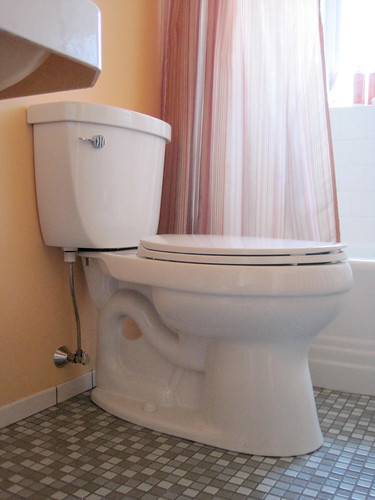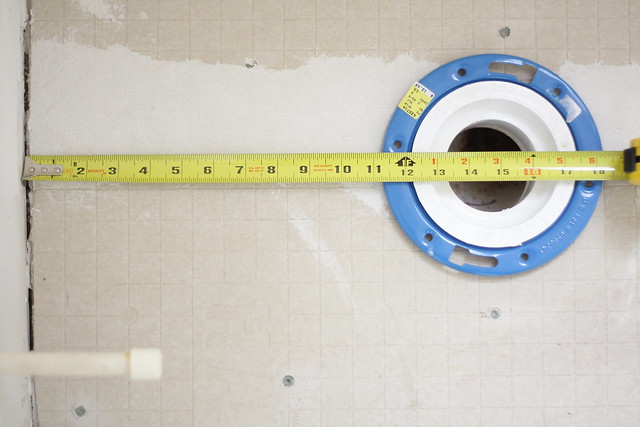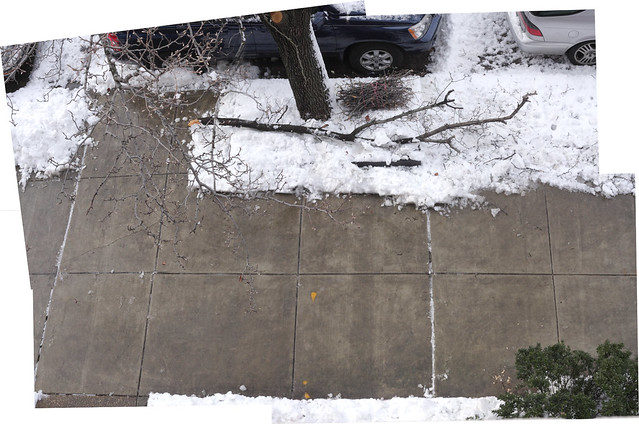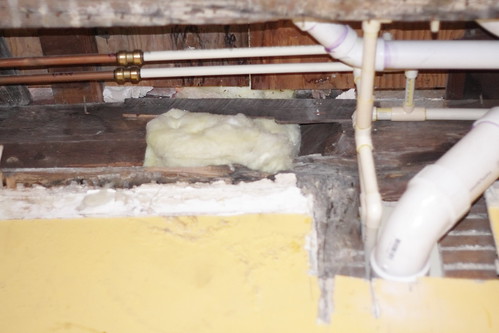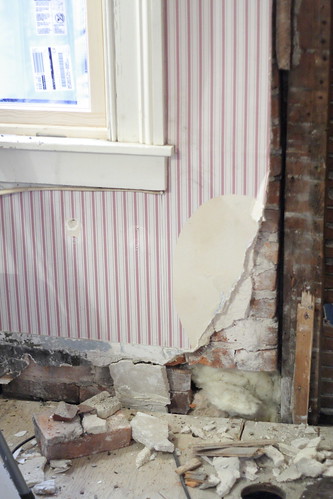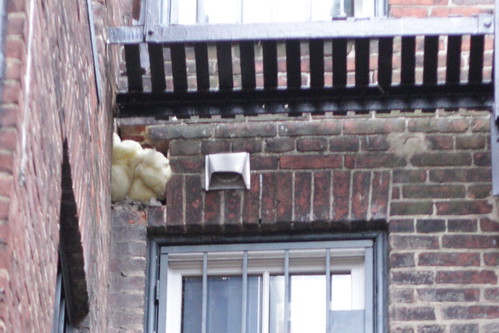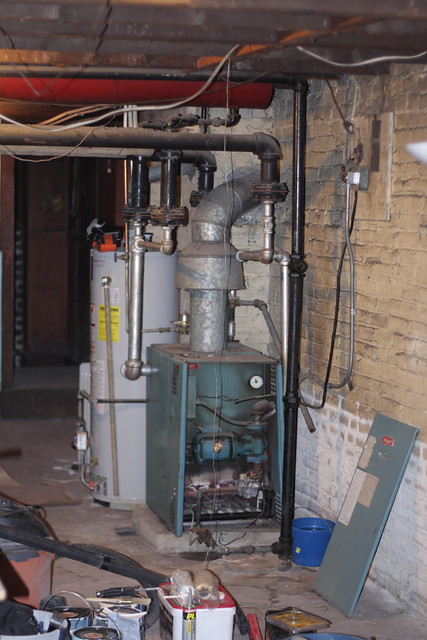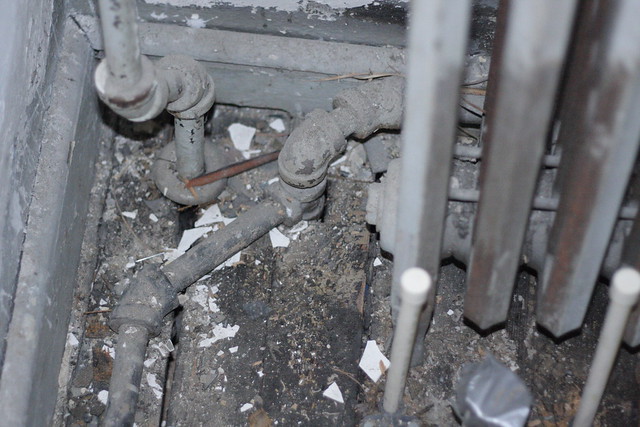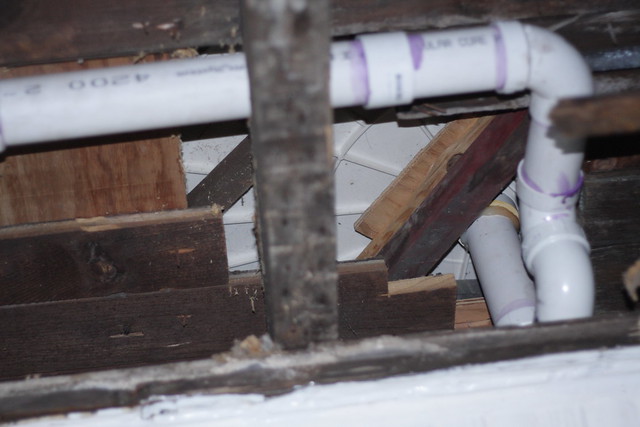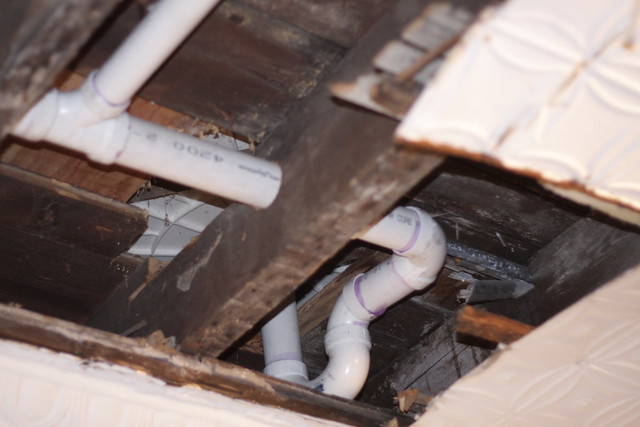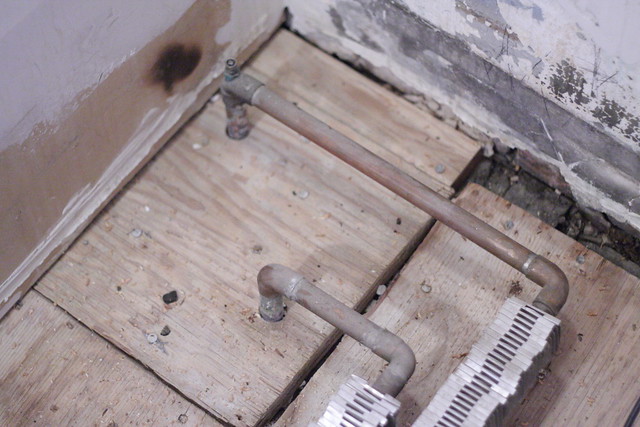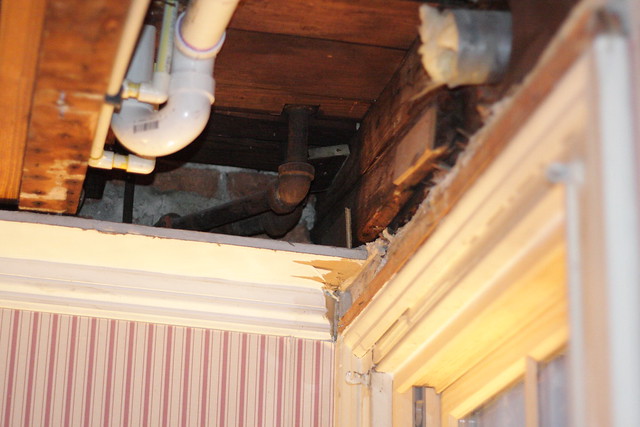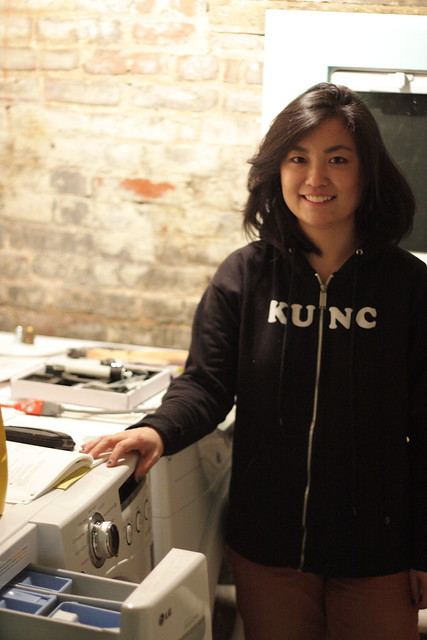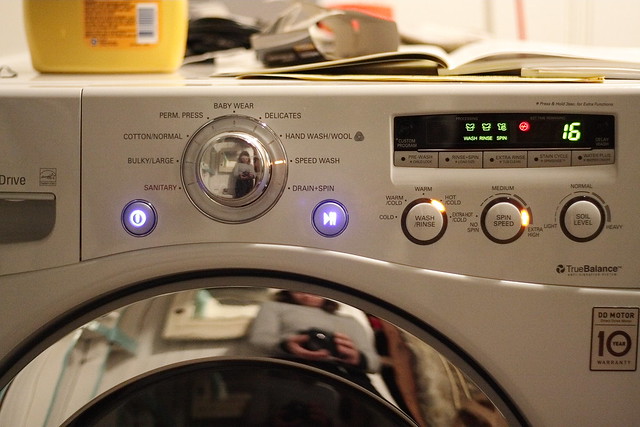When T&H bought this house, it immediately presented with countless, murky decisions to be made. We only had a vague notion that the house needed a lot of work, but what were the most dire problems? Everywhere you look you can find fundamental problems of varying destructive power, but that's just on the surface. What are the best diagnostic tests for assessing the fitness of a house and it's mechanics?
To help us learn to look at this house and see beyond peeling paint and warped floorboards, to understand the language of the creaks and cracks and hisses and stains, we began a flurry of consulting with professionals, amateurs, neighbors, colleagues, friends, and family far and near.
In this early period, during the first two weeks of home ownership, T&H weren't even certain, yet, if they wanted to do any of the rehabilitation work themselves or hire it out completely. With every visit of a potential contractor, our knowledge and understanding increased. Neighbors shed light on the shared idiosyncrasies of our houses and utility systems. Information gathered was tested against the intuition of our fathers and aunts and uncles.
The time to make some fundamental decisions was quickly approaching, but our confidence in our understanding of What Needs To Be Done was still shaky. And so it came to be that we engaged the services of a very kind, encouraging, and helpful home inspector named Keith.
We had received proposals of sorts from contractors saying they would test the plumbing and patch any small areas that need patching or leaks that needed sealing. Keith showed us all of the reasons why
none of the plumbing could be saved.
On the electrical side of things, we waded in worries, inspired by neighbors relating stories of
knob and tube wiring, but Keith tested and confirmed that even the electrical to our weirdest switches passed code.
One of the most exciting parts of the home inspection occured when we turned on the heating system. This system was a huge unknown in our world of cost estimating. The system is driven by a forced hot water boiler, of the cast iron variety, 39 years old. The boiler is located in the basement and is connected to cast iron radiators on upper floors, and to one baseboard-style heating loop on the second floor. From contractors we had heard numbers in every ballpark, but always the same tagline: "We won't know for sure how much it'll cost until we get in there and start working." But Keith turned that boiler on and nothing exploded! No radiators leaked! Everything got hot!
We learned much from Keith, but the major positive take away from that day was: At least the boiler's ok! Let's not mess with the heating system at all.
Well, we're going to mess with it.
We spoke to a few plumbers a couple months ago, and the majority of them shied away from working on these old heating systems. Scary strings of words like, "could be a couple hundred, could be two grand, or... (
trails off, eyes look to the distance)," and, "every union you crack is an opportunity for disaster," and, "but generally I dislike working with heating pipes," and, "I wouldn't touch the system, myself," had us trepidatious for a while. But subsequently we've spoken with plumbers who like working with heating pipes, and we've read up on others' experiences, and we continue to seek advice. I'm raring to have a crack at these radiators now.
Currently, we are working on finishing all of the bathrooms. Two of the bathrooms I'm working on have heating fixtures that need messing with. Here is a very schematic drawing of those heating fixtures as they relate to eachother and the boiler:
 |
pink zones = bathroom tile zones
blue lines = galvanized or brass pipe
orange lines = copper pipe
everything else not shown for clarity
(click to enlarge) |
|
|
Each bathroom's heating fixture has unique needs and challenges. Let's start with the third floor. Here's a close-up:
 |
| front view |
 |
| back view |
So, we're looking at a couple of things here. One, we want to remove the radiator temporarily while we repair the floor and walls. Two, there is a pipe running from the radiator's return pipe, all along the floor of the bathroom. That pipe then goes into the bathroom wall, up the wall, and pokes its head out into an adjacent closet, where it is capped off. Our theory is that the closet once contained an expansion tank for the system. When the tank became obsolete and was removed, they just left the pipe in place and capped it off. (Any other theories?) We would like to remove this pipe completely.
Here is a photo collage of the heating fixture in the bathroom:
 |
| don't forget to click to enlarge! |
One of the tricky things about this pipe is where it connects to the system. It branches off a T union that is partially embedded in the floor. Check it:
On the second floor, the "radiator" is a a baseboard heating system that was hidden underneath a long vanity.
A closer look at the connections below the floor:
 |
| from above |
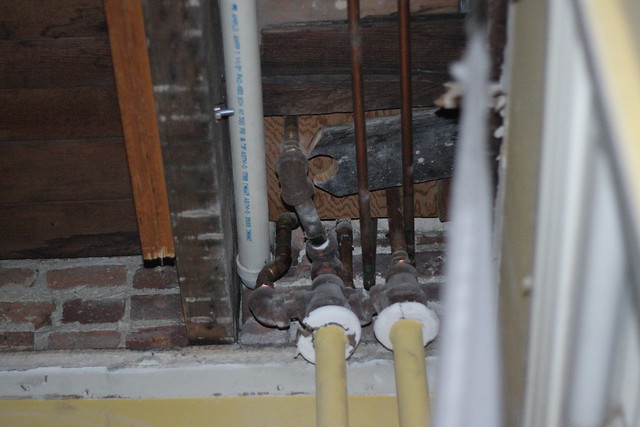 |
| from below |
We would like to remove this fixture and replace it with a small, cast iron radiator.
We know that we must drain the system below the elevation of the unions we will be opening. We know that the unions themselves are pretty straightforward.
What we don't know is this:
What's the best way to go about removing that pipe on the third floor?
Once everything has been removed, what's the best way to cap the pipes to be able to use the rest of the heating system while we finish the bathrooms? (Is that a bad idea in the first place?)
What are the tips and tricks to re-filling the system?
What would
you do?





